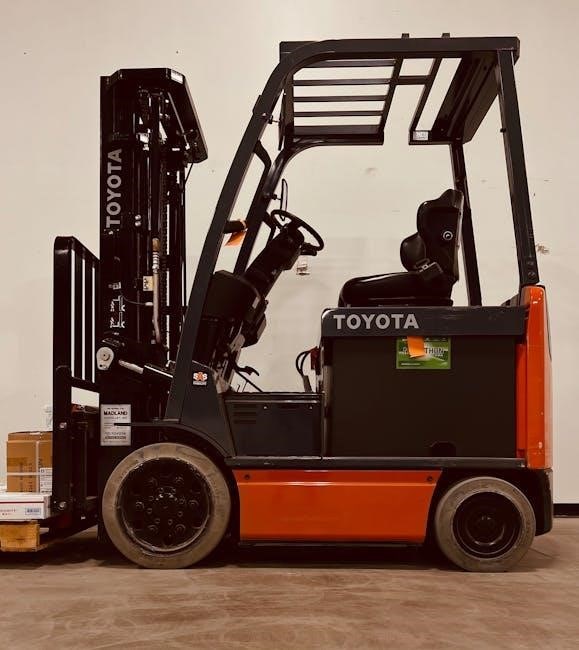2010 Toyota Corolla S Manual: A Comprehensive Guide
The 2010 Toyota Corolla S Manual is a sought-after vehicle, demanding a comprehensive guide to its operation and upkeep. This resource provides owners with key information for optimal vehicle performance and longevity.
The 2010 Toyota Corolla S Manual represents a blend of reliability and driver engagement, offering a unique experience compared to its automatic counterpart. This section serves as an introduction to understanding this specific model, highlighting what sets it apart. It is designed to help owners and enthusiasts alike navigate the nuances of the manual transmission Corolla S. We aim to cover everything from basic operation to advanced tips for maximizing performance and efficiency. By delving into this guide, you will gain insights into the key features, driving characteristics, and maintenance requirements that define the 2010 Corolla S Manual. This will empower you to fully appreciate and properly care for your vehicle.
Key Features of the 2010 Toyota Corolla S Model
The 2010 Toyota Corolla S model boasts several key features that distinguish it. These features include its engine specifications, transmission details, and interior technology, enhancing the driving experience overall.
Engine and Performance Specifications
The 2010 Toyota Corolla S model features a 1.8-liter four-cylinder engine that provides a balance of efficiency and adequate power. This engine delivers around 132 horsepower, making it suitable for daily commutes and city driving. The engine is designed to offer smooth acceleration and responsive handling for an engaging driving experience.
Fuel efficiency is a key highlight, with the Corolla S achieving impressive mileage ratings for its class, reducing fuel costs for owners. The engine’s design incorporates modern technologies to optimize performance while minimizing emissions. The overall performance is reliable and consistent.
Transmission and Drivetrain Details
The 2010 Toyota Corolla S manual transmission model is equipped with a five-speed manual gearbox. This transmission provides drivers with greater control over the vehicle’s performance and allows for a more engaging driving experience. The gear ratios are designed to optimize both acceleration and fuel efficiency.
The drivetrain is a front-wheel-drive (FWD) system, which enhances traction and stability in various driving conditions. The manual transmission allows for precise gear changes and clutch control, enabling drivers to maximize the engine’s power output. The transmission is known for its reliability and smooth operation.
Interior Features and Technology
The 2010 Toyota Corolla S boasts a range of interior features and technology designed for comfort and convenience. The S trim includes sporty seats, a leather-wrapped steering wheel, and metallic accents. Standard features include air conditioning, power windows and locks, and a six-speaker audio system.
The Corolla S also offers an auxiliary audio input, allowing for easy connection of external devices. Some models may include optional features such as a sunroof and upgraded audio systems. The interior design prioritizes functionality and ease of use. The dashboard layout is intuitive, and controls are easily accessible.

Operating the 2010 Toyota Corolla S Manual Transmission
Operating the 2010 Corolla S manual transmission requires understanding clutch control and gear shifting. Mastery ensures smooth driving and maximizes fuel efficiency in various road conditions.
Shifting Gears and Clutch Control
Effectively shifting gears in the 2010 Toyota Corolla S manual involves coordinating clutch and gear lever movements. Depress the clutch fully before shifting, ensuring smooth engagement. Release the clutch gradually while applying throttle. Practice smooth transitions between gears to prevent jerky movements. Downshifting requires matching engine speed to road speed for optimal control. Mastering clutch control prevents stalling and maximizes the lifespan of the clutch. Familiarize yourself with the gear ratios for efficient driving. Consistent practice leads to seamless gear changes, improving overall driving experience. Proper technique is crucial for both performance and longevity.
Driving in Different Conditions
Driving the 2010 Toyota Corolla S manual in varied conditions requires adapting your technique. In wet conditions, reduce speed and increase following distance. Use smooth acceleration and braking to avoid skidding; For snowy or icy roads, consider using winter tires for enhanced traction. Gentle acceleration and deceleration are crucial for maintaining control. Uphill driving may require downshifting to maintain adequate engine power. When driving downhill, use engine braking to control speed and prevent overheating the brakes. Anticipate changes in road conditions and adjust your driving accordingly. Always prioritize safety and adapt to the environment for a secure journey.
Maintenance and Service for the 2010 Toyota Corolla S
Proper maintenance ensures the 2010 Toyota Corolla S runs smoothly. Regular service, including oil changes and inspections, extends its lifespan. Following the maintenance schedule is highly recommended.
Routine Maintenance Schedule
Adhering to the 2010 Toyota Corolla S’s routine maintenance schedule is vital for its longevity and optimal performance. Regular oil changes are essential, typically recommended every 5,000 to 7,500 miles, depending on driving conditions and oil type. Tire rotations should occur every 6,000 to 8,000 miles to ensure even wear and extend tire life.
Inspect the brakes regularly for wear and tear, replacing pads and rotors as needed. Air filter replacement is crucial for engine efficiency, usually done every 15,000 to 30,000 miles. Don’t forget spark plugs, typically replaced every 30,000 to 100,000 miles.
Fluid Checks and Replacements
Maintaining proper fluid levels in your 2010 Toyota Corolla S manual is crucial for its smooth operation and longevity. Regularly check the engine oil level, ensuring it’s within the recommended range on the dipstick. Inspect the coolant level in the reservoir, topping it off as needed to prevent overheating. Brake fluid should be checked for proper level and clarity, replacing it every two to three years.
Power steering fluid is another important fluid to monitor, ensuring smooth steering. Transmission fluid in manual models needs periodic checks and changes, following the manufacturer’s guidelines for optimal performance. Windshield washer fluid should be kept full.

Troubleshooting Common Issues in the 2010 Corolla S Manual
Addressing common issues in the 2010 Corolla S manual transmission promptly can prevent further damage. This section offers guidance on identifying and resolving typical problems, promoting vehicle reliability and extending its lifespan.
Identifying Potential Problems
Recognizing potential problems early in your 2010 Toyota Corolla S Manual is crucial for maintaining its optimal performance. Common warning signs include unusual noises from the engine or transmission, such as whining, grinding, or clunking sounds. Difficulty shifting gears, a slipping clutch, or a burning smell can also indicate underlying issues. Keep an eye on warning lights on the dashboard, like the check engine light or low oil pressure light, as they signal potential malfunctions. Regularly inspect fluid levels, including engine oil, coolant, and brake fluid, to ensure they are within the recommended ranges. By staying vigilant and addressing these issues promptly, you can prevent costly repairs and extend the life of your vehicle.
Basic Troubleshooting Steps
When facing issues with your 2010 Toyota Corolla S Manual, initiating basic troubleshooting can often resolve minor problems. Start by consulting your owner’s manual for specific guidance related to the issue. Check the fluid levels, including engine oil, coolant, brake fluid, and power steering fluid, ensuring they are at the proper levels. Inspect the battery terminals for corrosion and clean them if necessary. If experiencing electrical problems, check fuses for any blown ones and replace them accordingly. For starting issues, try jump-starting the car with another vehicle. If the problem persists, consider consulting a qualified mechanic for further diagnosis and repair, ensuring accurate and effective resolution. Always prioritize safety during troubleshooting.

Finding and Utilizing the 2010 Toyota Corolla Owner’s Manual
Accessing the 2010 Toyota Corolla owner’s manual is crucial for understanding vehicle features and maintenance. Both digital and physical copies offer valuable information for optimal vehicle operation and care.
Accessing Digital and Physical Manuals
Locating the 2010 Toyota Corolla S owner’s manual is simple through several avenues. Toyota’s official website is a primary source, often providing free PDF downloads of owner’s manuals; These digital versions offer convenience and searchability. Alternatively, physical manuals may be found accompanying the vehicle upon purchase or through contacting Toyota dealerships directly. Online marketplaces and automotive literature retailers also present options for acquiring a hard copy. Ensuring the manual corresponds precisely with the 2010 Corolla S model year is crucial. Always verify the part number or edition to ensure accuracy and relevance.
Understanding Manual Sections and Information
The 2010 Toyota Corolla S owner’s manual is structured into distinct sections, each addressing specific aspects of vehicle operation and maintenance. Key sections include driving procedures, instrument panel controls, safety features, and scheduled maintenance guidelines. Familiarizing yourself with the table of contents and index is paramount. Detailed explanations accompanied by diagrams illuminate complex systems. Pay close attention to warnings and cautions, highlighting critical safety information. Understanding the manual’s layout empowers owners to quickly locate pertinent details regarding troubleshooting, fluid specifications, and recommended service intervals. Consistent reference ensures informed decision-making and optimal vehicle care.

Safety Features and Operation
The 2010 Toyota Corolla S boasts a range of safety features. Understanding their operation is crucial. This section details these systems, promoting safe driving habits and passenger protection.
Explanation of Safety Systems
The 2010 Toyota Corolla S comes equipped with several key safety systems designed to protect occupants. These include advanced airbags strategically placed throughout the cabin to cushion impacts during a collision. Anti-lock Braking System (ABS) is standard, preventing wheel lock-up during hard braking, enhancing steering control. Vehicle Stability Control (VSC) helps maintain directional stability, especially in slippery conditions, by mitigating oversteer or understeer.
Traction Control (TRAC) limits wheel spin during acceleration, improving grip on various surfaces. These systems work in harmony to provide a safer driving experience, reducing the risk of accidents and injuries.
Proper Usage for Optimal Safety
To maximize the effectiveness of the 2010 Toyota Corolla S’s safety features, proper usage is essential. Always ensure that all occupants are wearing seatbelts correctly, regardless of seating position. Adjust headrests to the appropriate height to minimize whiplash risk in a rear-end collision. Familiarize yourself with the location and operation of all safety features, including airbags and child safety locks.
Regularly inspect tire pressure, as properly inflated tires contribute to optimal braking and handling performance. Avoid distracted driving behaviors, such as texting or using a cell phone, to maintain focus on the road.
